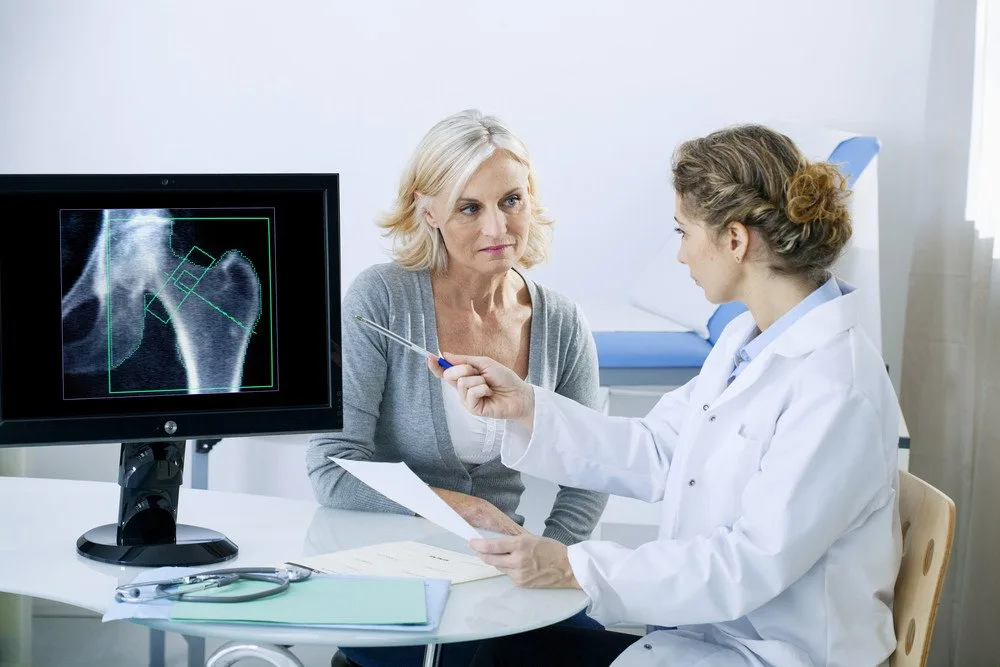According to statistics, the global prevalence of osteoporosis was 18.3%. The condition is more predominate in women, with it affecting 200 million women worldwide. The condition impacts both bone mineral and bone mass, causing a decrease in bone strength and a significant increase in fractures, with osteoporosis causing fractures every 3 seconds.
Postmenopausal women are at a higher risk of osteoporosis and since research has noted that osteoporosis can be influenced by environmental factors, researchers have set out to find a link between air pollution and bone mineral density in postmenopausal women.
Air Pollution and Bone Health
In a recently published study, researchers examined the data of 161,808 postmenopausal women. These women were between the ages of 50 and 79 years at the time of enrollment, which was from September 1994 through December 1998. The data was extracted from the Women’s Health Initiative, and it was analyzed from January 2020 to August 2022.
The researchers used the participants’ home addresses to estimate air pollution (PM10, NO, NO2, and SO2) exposures. They also measured bone mineral density at the time of enrollment (September 1994) and again after one, three and six years using the DEXA scan. The scans included whole-body, total hips, femoral neck and lumbar spine.
Does Dirty Air Increase Osteoporosis Risk?
The study’s findings, published in EClinicalMedicine, found that as air pollution rose, bone mineral density decreased across the body, including the neck, spine, and hips. These findings were more obvious in the lumbar spine, where nitrous oxides, when compared to normal aging, were twice as damaging to the area. The most common sources of nitrous oxides are fossil fuels and car exhausts.
“Our findings confirm that poor air quality may be a risk factor for bone loss, independent of socioeconomic or demographic factors.” – Dr. Diddier Prada, study first author.
Dr. Prada is also an associate research scientist in the Department of Environmental Health Sciences at Columbia Mailman School of Public Health, said in a press release.
Healthy air for healthier bones
Granted, the study does have its limitations, most notably that it has yet to definitively prove a causal relationship where air pollution is the larger contributor over other factors. However, the study does highlight the serious dangers associated with air pollution. It’s clear that addressing this climate issue is necessary for improved health.
“Improvements in air pollution exposure, particularly nitrogen oxides, will reduce bone damage in postmenopausal women, prevent bone fractures, and reduce the health cost burden associated with osteoporosis among postmenopausal women.” says lead Dr. Andrea Baccarelli.
Dr. Baccarelli is chair of the Department of Environmental Health Sciences at Columbia Mailman School of Public Health. He adds that further efforts should focus on detecting those at higher risk of air pollution-related bone damage.
Improving the quality of the air that we’re breathing is a group effort. While we can wear air pollution masks and avoid areas with intense contamination, we need to think long-term. We need to encourage governments and institutions to implement policies that can help to improve air quality.
Additionally, if you want to protect your bones and reduce your risk of osteoporosis, then try these easy healthy bone tips:
- Enjoy a a diet rich in calcium and vitamin D – milk, cheese, spinach, kale, salmon, tuna, and eggs.
- Avoid smoking
- Stay clear of alcohol
- Partake in regular exercise – walking helps to build strong bones
Want to know more?
Osteoporosis is not the only condition that air pollution may be contributing to. In fact, a recent study has suggested that air pollution may be the obesity risk factor that we’re not talking about.
MAIN IMAGE CREDIT: Image Point Fr/Shutterstock
References
Prada, D., Crandall, C. J., Kupsco, A., Kioumourtzoglou, M. A., Stewart, J. D., Liao, D., Yanosky, J. D., Ramirez, A., Wactawski-Wende, J., Shen, Y., Miller, G., Ionita-Laza, I., Whitsel, E. A., & Baccarelli, A. A. (2023). Air pollution and decreased bone mineral density among Women’s Health Initiative participants. EClinicalMedicine, 57, 101864. https://doi.org/10.1016/j.eclinm.2023.101864



![women [longevity live]](https://longevitylive.com/wp-content/uploads/2020/01/photo-of-women-walking-down-the-street-1116984-100x100.jpg)










